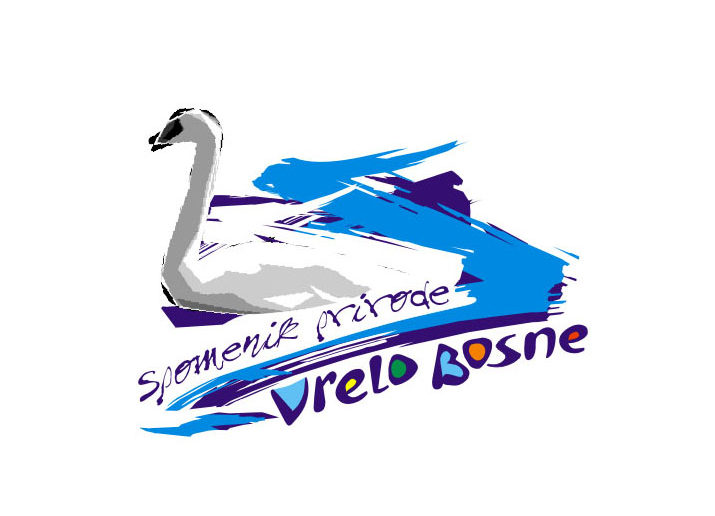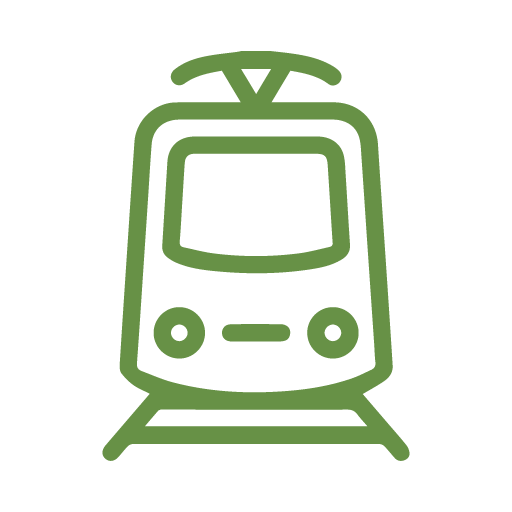The area of Vrelo Bosne is the spring part of the river Bosna, located southwest of the city of Sarajevo, below the slopes of the mountains Igman and Bjelašnica. The area of Vrelo Bosne has always been considered as an integral part of the area Ilidža - Vrelo Bosne - Stojčevac, because with its natural and cultural-historical values this area was always linked. According to the created values, this area represents a whole especially from the aspect of tourism, spa treatment and recreation.

Vrelo Bosne
Spring of the river Bosna
The richness of nature of this area, which attracts a large number of people, is reflected in the resources of quality drinking water, thermal waters, forests, agricultural potentials, attractive locations for tourism and recreation, as well as many cultural and historical heritage.
The area of Vrelo Bosne is equipped with park furniture for staying in nature, and a playground for children. It has beautifully landscaped promenades that provide access to lakes where swans live, the most recognizable symbols of the spring of Bosnia. As already mentioned, the Great Alley is suitable for walking, jogging and cycling.
Catering services are provided by the privately owned restaurant "Labud".
Natural and cultural heritage
Ilidža Spa includes buildings starting from the old railway station, the facilities of the Spa and Hotel, newly built hotels and pavilions. Credits for the first construction in Ilidža (and the first construction in this style) belong to the engineer Matija Ribarić, who as a “district surveyor” on the orders of the National Government made a plan and brought to life the new Ilidža.
Within this area, hotel “Bosna” stands out. It is a monumental version of the “Swiss style” in Bosnia.
This area is a significant archaeological site. In the second half of the 9th or in the first decades of the 10th century, a church dedicated to St. Stephen, the first martyr, was built on this site. The building is pre-Romanesque, and the dating is based on the findings of parts of church furniture. The property, together with the church, was donated to the Bosnian bishop during the founding of the Diocese in the second half of the 11th century. The church is mentioned in the charter of Bela IV from 1244. Over the centuries, it was rebuilt once and demolished in the early 14th century. A necropolis of about 80 stećak tombstones was formed in and around its ruins.
The slopes of Stojčevac are connected to Vrelo Bosne by a Grand alley consisting of trees, pedunculate oak and linden trees. In the area that is bordered by the slopes of Igman, there are parks with 49 species of trees, and the bushes include various species of wild roses, raspberries and blackberries whose flowers contribute to the overall landscape atmosphere.
Nowadays, when most of the buildings have been devastated, there have been wild weeds that have further degraded the area. Aquatic ecosystems are represented by the Stojčevac stream, which downstreams to the center of the area and forms an ecosystem in the form of a pond or a lake. Before the war, the Stojčevac site was one of the most beautiful and well kept areas in the city, and it was an important tourist-recreational and excursion center.
This bridge is usually referred to as the bridge at Plandište, the bridge in the field, and the name Roman bridge is often mentioned. In old documents from the Middle Ages it is mentioned as “Bosna basi kuprisi” (“bridge at the spring of Bosnia”).
The name Roman bridge is primarily based on masonry details from Roman buildings found on the bridge. These details are probably from Roman tombstones, which were often used as building material.
The bridge is one of a number of examples of creative inventiveness and architectural diversity in Bosnia and Herzegovina and as such is a protected cultural monument.
The Great and Small Alleys were formed in the period of 1893, when 3,000 chestnut and plane trees were planted (3.5 km long), and the famous Ilidža Park was arranged. In addition to the construction of a number of facilities, horticulture has enhanced the wild beauty of the environment, which still represents a significant horticultural and environmental value.
Due to its natural beauty, the spring is arranged as well as the spa complex, so that the shores were built, a large number of bridges were built to bridge backwaters, ponds and restaurants.
The wider area of Vrelo Bosne is characterized by great heterogeneity of vegetation cover. Over 26 different plant communities have found their habitat in this area (partly with human help). In the whole mosaic, primary ecosystems (edges of Igman) intersect, with meadow or secondary ecosystems, and tertiary ones presented with arable land and park space.
As a result of previous research in the wider area of Vrelo Bosne, a large variety of shrubs and trees, as well as herbaceous plants, has been registered. In previous research, special attention has been paid to determining the number of honey and medicinal plants, which are very common in this area due to favorable conditions.
The composition of trees is dominated by cultivated and planted species in parks and alleys, however, there are also segments with wild species.
In such a small area, there is aquatic flora which alternates with coastal and typical terrestrial flora, thus creating an example of a small botanical garden.
The number of animals registered in this area (in the aquatic and terrestrial environment) is accompanied by a high diversity of plant cover. According to current data, 20 species of mammals have been identified, which are partly related to the slopes of Igman. The fish is dominated by an indigenous species of brown trout, which is more related to the area of Little Bosnia to Plandište, and next to them is California trout and grayling, which are non-native, but have adapted well to this part of the watercourse. Endemic species of shrimps (two) and insects (three) are present in the composition of invertebrates found in aquatic ecosystems, which are related to water by their larval period, and as adults they live on coastal vegetation.
The area of Vrelo Bosne is the area where “Bačevo”, the main source of drinking water for the city of Sarajevo, is located. The catchment area of the spring is represented by the mountains Igman and Bjelašnica. In this area, water occurs in the form of:
– hot springs,
– surface watercourses, and
– groundwater, thermal, thermo-mineral and cold waters.
At Vrelo Bosne, there are six springs and numerous streams, which merge into a single watercourse, marked as Little Bosnia. The watercourses Večerica and Stojčevac also contributed to the hydrological diversity of the wider area of Vrelo Bosne.
The first data about Ilidža (municipality to which the area belongs administratively) dates back to the neolithic, and according to the degree of population it is the oldest settlement in the central part of Bosnia. In Roman times, Ilidža was called Lužani. No significant development of this area was recorded in this period. Also, in Ottoman times, the development of this area was very slow.
The name Ilidža itself is of Turkish origin and means a spa. In Turkish times, in the area of the spring of Bosnia, fairs or excursions were organized, and a bridge was built on Plandište “Roman Bridge”, a stone bridge on the Railway, and a large inn (Karavan-saraj) in which the municipality of Ilidža is now located.
The current physiognomy and appearance of the area of Ilidža together with Vrelo Bosne was given during the Austro-Hungarian rule. The turning point in the development of the spa Ilidža and the rest of the area happened back in 1885, when the Provincial Government took over the authority over the spa, contributing to the development of the spa complex and the wider surroundings of Ilidža together with Vrelo Bosne. At that time, according to the literature, recreational sports were recorded in the area of Vrelo Bosne and its surroundings: hunting, fishing, horseback riding, boating, excursions, hiking. At this time, the hotels “Hungarija” (later Herzegovina), “Austria” (later Serbia), “Bosna”, a large number of villas in Velika Aleja, as well as the alley itself were built. According to the records in the London newspapers, this area was said to be the most beautiful place in the world, with an invigorating air, an enchanting climate, with a landscape that could infuse a poetic mood even in the soul of a London worker.
For the past 50 years, this area has been a picnic spot for the citizens of Sarajevo, Bosnia and Herzegovina and beyond. The tourist area, which consisted of hotels and lower catering facilities, surrounded by landscaped parks, continued into the stop for carriages and the entrance to the Great Alley (the famous alley).
Given the importance of this area, it is extremely important to protect natural resources (flora, fauna and watercourses), cultural and historical heritage, excursion and tourist potential, but especially the protection of water sources, which will surely remain primary for the city.
How to reach Vrelo Bosne?
The area of the Natural Monument "Vrelo Bosne" can be reached by car from the road Sarajevo - Mostar (M-17) where the road at the Old Orthodox Church branches off to the left for Vrelo Bosne. Visitors coming from this direction are provided with paid parking. Another possibility to arrive by car is from the direction of Ilidža to the beginning of the Great Alley, which is closed to motor vehicles. Parking is also provided for a fee.
Vrelo Bosne can be reached by public transport (tram) to the last stop in Ilidža, from where it takes about 10 minutes to walk to the beginning of the 3.5 km long Great Alley.
The nucleus of Vrelo Bosne can be reached by walking or cycling along the Great Alley. Carriages that are a real attraction are available to visitors.


Busom


Autom


Tramvajem
Price list Vrelo Bosne
ENTRY PRICE TO THE "VRELO BOSNE" NATURE MONUMENT
-
DRIVING ON THE ROUTE VRELO BOSNE- STOJČEVAC FOR MAXIMUM OF 3 PEOPLE - 1 TOUR20,00 KM
-
DRIVING ON THE ROUTE STOJČEVAC-VRELO BOSNE FOR MAXIMUM OF 3 PEOPLE - 1 TOUR20,00 KM
-
SHOOTING IN THE AREA FOR COMMERCIAL PURPOSES35,00 KM/HOUR
-
SHOOTING IN THE AREA FOR COMMERCIAL PURPOSES200,00 KM/DAY
-
THE ORGANIZATION OF OUTDOOR EVENTS THAT DOES NOT INCLUDE THE SERVICES OF PUBLIC CANTONAL INSTITUTION FOR PROTECTED NATURAL AREAS50,00 KM/HOUR
-
THE ORGANIZATION OF OUTDOOR EVENTS THAT DOES NOT INCLUDE THE SERVICES OF PUBLIC CANTONAL INSTITUTION FOR PROTECTED NATURAL AREAS300,00 KM/DAY
Heading Title
NOTES:
The following categories are exempted from paying entrance fees to the area of the Nature Monument “Vrelo Bosne”:
- Children without parental care with companions;
- Children with developmental disabilities with companions;
- Children up to 6 years;
- Scientific and educational institutions, and non-governmental organisations that are involved in environmental protection with prior notice and written consent of the Director of the Cantonal Public Institution for Protected Natural Areas.
Additional privileged categories of visitors include:
- Population residing in the territory of the municipality where the area of Nature Monument “Vrelo Bosne” is located with obligatory ID presentation;
- War invalids with the presentation of the appropriate document;
- Families of martyrs and families of fallen fighters with presentation of the appropriate document.
Privileged categories of visitors get a discount only on entrance fees to the Nature Monument “Vrelo Bosne”.